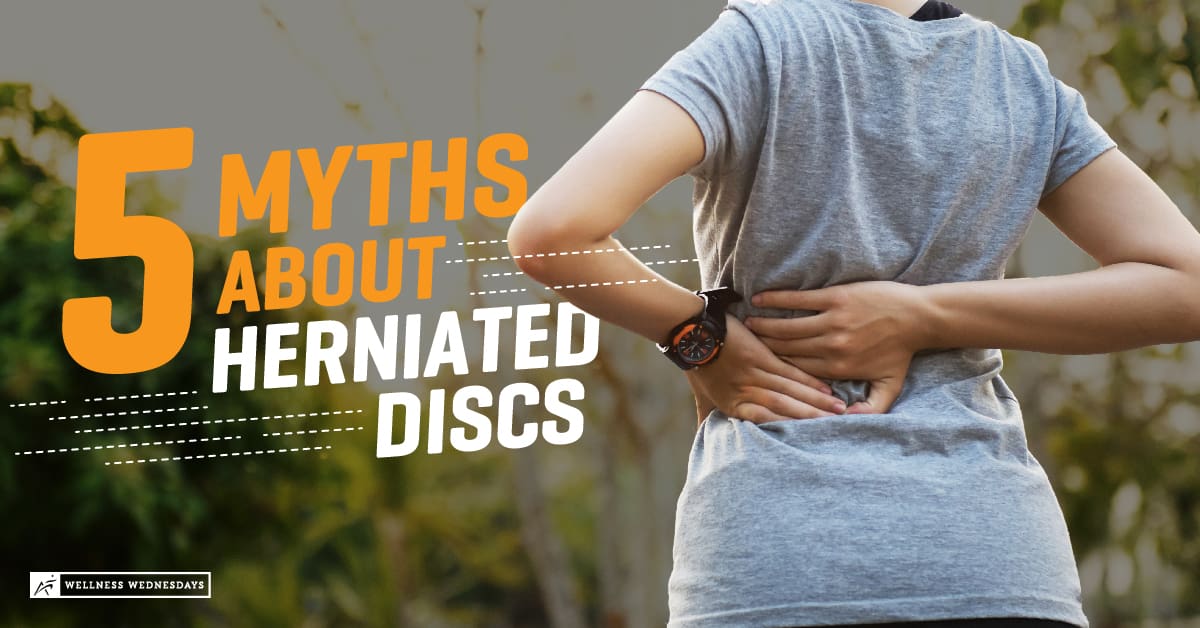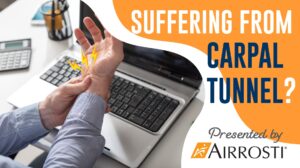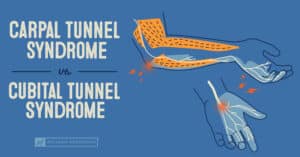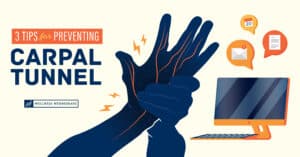Herniated discs are some of the most commonly diagnosed yet least understood back conditions. Did you know that you could have a herniated disc without even knowing it? Today, we’re debunking five of the most common myths surrounding this complex medical condition.
Vertebral discs are strong connective tissues located between each vertebra of the spine. The disc’s structure is like that of a jelly doughnut: It has a tough, fibrous exterior holding a gel-like interior. The disc’s structure gives the spine its mobility and support. When two bones compress the disc too much, the disc herniates, rupturing the exterior and pushing the gel out toward the spinal column.
When the herniated disc presses on the nerves in the spinal column, it can cause back pain, numbness, tingling, or weakness in the legs.
Watch the video below to learn more about the potential causes, symptoms, and treatment options for herniated discs.
Debunking 5 Common Disc Injury Myths
1) If You Have Back Pain, You Probably Have A Herniated Disc.
Truth: There are many symptoms associated with disc injuries, including back pain. However, back pain alone can have many potential causes unrelated to a slipped disc. Talk to your doctor about all your symptoms to get a better idea of what’s really causing your back pain.
2) Imaging Tests Will Show The Cause Of Your Back Pain.
Truth: Even though an MRI may show you have a disc herniation, doesn’t mean the herniation is the true cause of pain. An MRI won’t be able to tell you if weak, unbalanced muscles or other disorders may also be contributing to your back pain. The best way to find the source of your pain is to conduct a thorough evaluation.
3) If You Have A Herniated Disc, You Should Rest And Stop Exercising.
Truth: It’s more beneficial to stay active by doing light exercise when you’re dealing with a herniated disc. You could try taking a walk or doing a few stretches to help minimize the symptoms while staying on your feet.
4) Surgery Is Required To Fix A Herniated Disc.
Truth: Most disc injuries do not require surgery to heal. In most cases, disc herniations will heal on their own in time. Before deciding to undergo surgery, you may want to weigh the risks before considering this type of treatment.
5) Most Herniated Discs Occur In The Lower Back.
Truth: This is true! Lumbar herniated discs are very common, and are usually caused by excessive weight, increased age, and improper lifting technique.
Get Back In The Game, Faster And Better
Our expert providers are professionals at diagnosing the cause of your pain and fixing it at the source, without medications or surgery. With targeted hands-on manual therapy and an exercise plan tailored to your specific needs, Airrosti can resolve most patient cases in just 3 visits (based on patient reported outcomes). If we determine that Airrosti is unable to resolve your condition, or you wish to seek other options for treatment, we will refer you to an appropriate specialist.
If back pain from a bulging disc or other injury is causing you trouble, schedule an appointment with us today and get back to doing the things you love most.
Read our Medical Disclaimer here.










